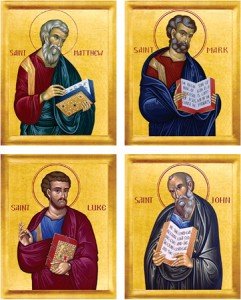 Hopefully some of my readers will have found the information I have been sharing in the article interesting. I’ve been sharing information about the similarities and differences that exist in the three Synoptic Gospels. This is intended to help all of us to be more informed Christians.
Hopefully some of my readers will have found the information I have been sharing in the article interesting. I’ve been sharing information about the similarities and differences that exist in the three Synoptic Gospels. This is intended to help all of us to be more informed Christians.
In the last issue, I shared one last theory about the Synoptic Gospels, namely the theory of Multiple Documents being the Basis for the Synoptics. This theory consists in supposing a rather mixed set of documents as the origins of the Synoptics. The author of this theory suggested that the real missionary life of the early Christian Church could account for this form, for these various documents would serve as memory aids to preachers and teachers. From these the men involved in this work would draw according to various purposes and the needs of their hearers. These documents would then have built up into miniature collections. Later on the Synoptics gathered these together.
The modern interpreters of this theory stress not so much the written sources but rather the fragmentary tradition, whether oral or written, that evolved according to historical needs. At this late date it would truly be impossible to unravel the accretions from the nucleus.
The Multiple-Document Theory, with some variations, has found several modern proponents. At the origin of the Gospel material there was a standardization of the materials in Aramaic, followed by many partial traditions. All this was put into Greek at an early date. Oral tradition would be expanded and modified by it. These particular traditions issue in the canonical Gospels. No other kind of documentary source is posited.
The theory combines oral tradition and a single written Gospel flowing from multiple documents. Each of these is insufficient to explain the Synoptic Problem. The agreements among the Synoptics seem to require a literary process and not an oral process; the agreements cannot be reduced to a single document. Yet this theory does take into account both oral and written traditions. Perhaps it has not yet been sufficiently worked out. Taking the insights of the other theories and working on more of the minutiae of this theory might produce a closer approximation to the true background of the Synoptics.
You can see that scholars have labored over the fact that the three Synoptic Gospels have definite similarities and differences. The question is why? They’re not history!
